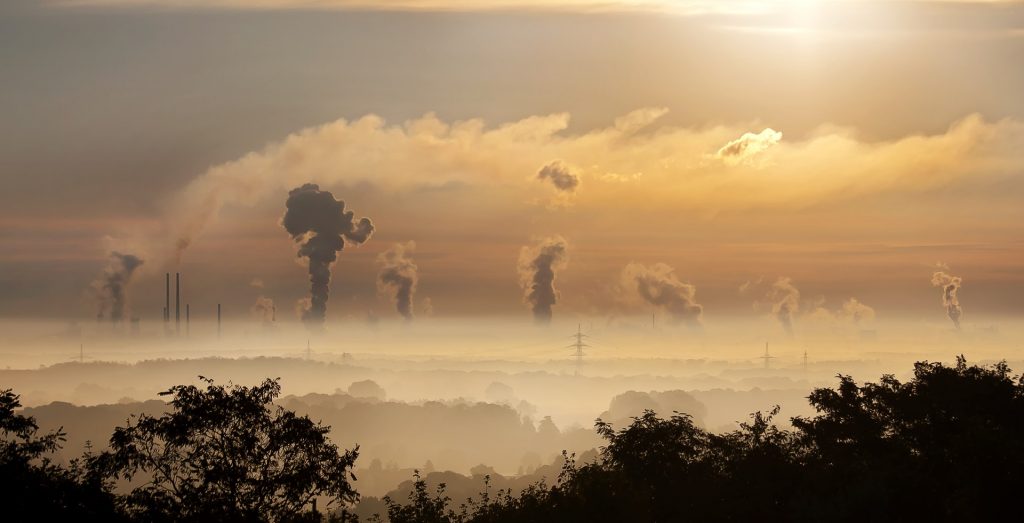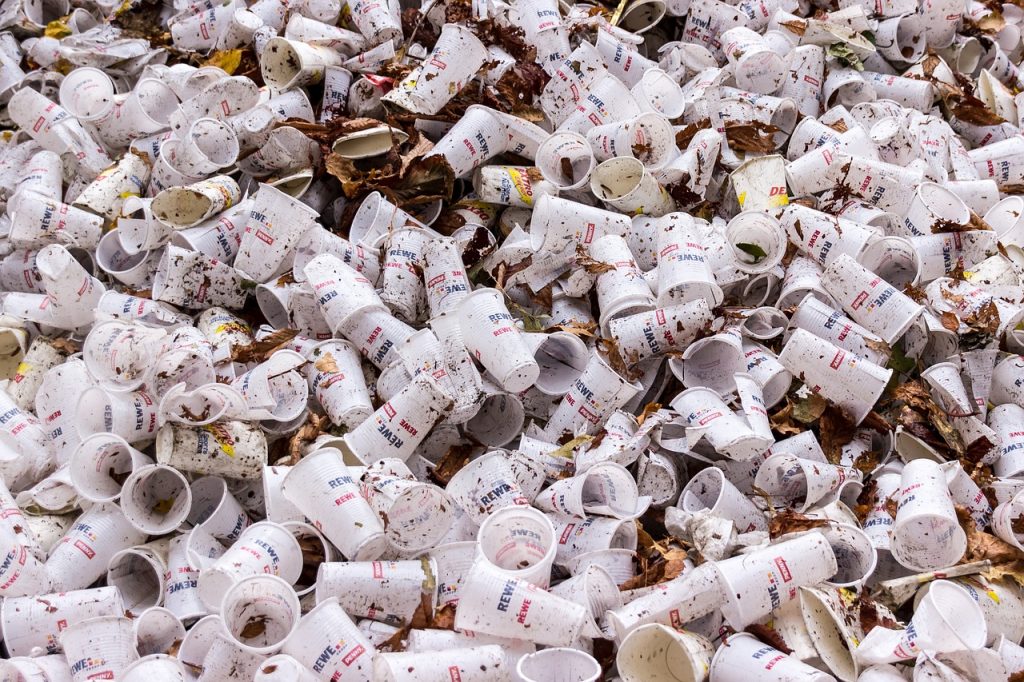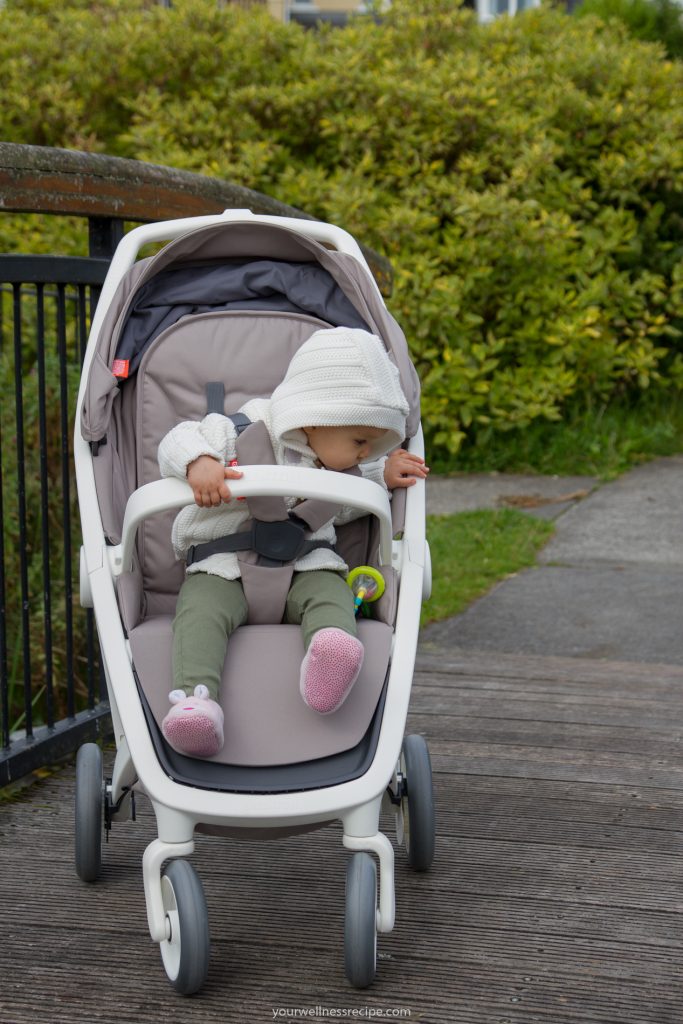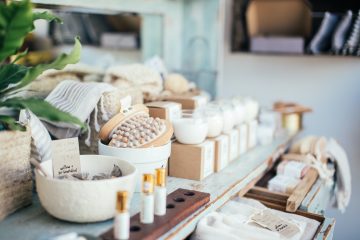Happy Earth Day!
No matter who you are and where you live I see no reason to not celebrate this day – for the Earth is our only home where we can exist. If we take care of our planet, it will take care of us.
I could give you thousands of reasons why we should be more concious about our lifestyle choices, dietary choices and consumer’s choices in general for the sake of the planet. It breaks my heart to see that people do not care about our environment, about the future of our planet and the future of our children on this planet. I could give you thousands of reasons to ditch convenience and go zero-waste, plant-based, eco-friendly – you name it. Unfortunately, it will not necessarily persuade anyone. It is in our human nature to do things only when there’s something in it for us and not for someone or something else.
I hope this post will show how big the current problem is and will motivate you to go a little greener.
The Global Crisis
We live in a world where global warming and pollution are one of the biggest problems nowadays. One may argue that we can’t control the global warming, but it is a well established fact that one of the biggest effects on climate is due to greenhouse gas emissions, which is also a form of pollution and is something that we can control.
Pollution kills over 100 million people every year. It is one of the major causes of death in the world.
Pollution also kills over 100 million animals per year, which also affects the world’s biodiversity and affects the climate in the long run.
Over 3 million children under 5 die every day due to environmental factors, such as pollution and the lack of clean drinking water.
How did we get here?
There are different kinds of pollution and it affects our environment and human health on different levels.
Air pollution
Air pollution mainly comes from burning fossil fuels for energy, agriculture and transport. Sulfur oxide is formed when fossil fuels are burned, and it creates a sulfurous smog over the cities, which can lead to serious health problems. More smog comes from nitrous oxides and carbon dioxides discharged with car exhausts and burned coal. Gasoline, various paints and cleaning products and solvents also produce volatile organic compounds that contribute to air pollution. Gas, fuel combustion and burning gasoline lead to heavy metals such as mercury and lead being discharged into the air.
When we breathe in the polluted, toxic air, it damages the lining of the lungs and mucosal membranes in the nose and throat. Polluted air also damages the eyes.
Eventually, this toxic air pollution leads to cancer, reproductive problems and birth defects.
Agriculture is one of the biggest contributors to greenhouse gas emissions with livestock farming comprising 2/3 of the total emissions. This is why a plant-based diet is more environmentally sustainable. Hunting wild animals for food is also not the answer because a decrease in number of wild animals changes the composition of the forests – animals help spread the seeds to sustain vegetation. Global deforestation is another leading cause of CO2 emissions.
10 to 20% of global CO2 comes from logging and land clearing – this is more than CO2 emissions from transportation.

Smog irritates respiratory system, causing lung damage and worsening asthma.
Water pollution
Around 5000 people across the world die every day because of water pollution alone. Polluted water also means polluted fish and seafood, which is consumed by billions of people on a daily basis.
Approximately 14 billion pounds of waste is dumped into the ocean, the majority of which is plastic. In Los Angeles area alone, 10 tons of plastic fragments, such as plastic bags, wraps, straws and bottles, are washed into the Pacific ocean every day.
The use of pesticides also means that pesticides leach into ground water, where over 73 different kinds of pesticides are found. Ground water is one of the most common sources of drinking water. Pesticides can cause gene mutation, birth defects and cancer.
Livestock, being the major soil pollutant, also contributes to the water pollution since the rain carries the dangerous bacteria from its waste into the streams.
Household chemicals that are used to clean homes on a daily basis also end up in ground waters and are 10x more toxic per acre than those used by farmers.
Landfill waste
Apart from poisining our water, landfill waste breeds vermin, which leads to more contamination and disease. Electronic waste pollutes the land and ground waters with heavy metals that cause inflammation, cardiovascular disease, DNA damage and cancer.
Landfill waste contaminates the plants and also animals that consume those plants. Ultimately, both contaminated animals and plants end up in our diets, slowly poisoning us.
In 2007 Ireland produced approx. 780 kg waste per person, followed by the USA with 760 kg waste per capita and the UK with 570 kg of waste per capita.
Is this the world we want to live in? The world occupied by waste?
A word about Plastic
Plastic is probably one of the most used materials in the world. From furniture to toys to food packaging, it is found in almost every home.
Americans buy over 29 million plastic water bottles per year, while recycling only 13% of bottles every year.
1 trillion plastic bags are used each year around the world.
Unfortunately, it takes anywhere from 500 to 1000 years for plastic to degrade, meaning that not a single water bottle used by you or me will degrade during our lifetime and that of our great grand children.
But this is not the only problem with plastic. Plastic contains various chemical compounds, such as bisphenol A (BPA), which are known hormone disruptors and the problems associated with them could range from weight gain and hormone imbalance to infertility and other, more serious health issues. Plastic that is used around food will be of the biggest concern, especially bottled water, single-use plastic food containers, straws and cling films, but it doesn’t stop at that. Because the waters around the globe are so polluted with plastic, eating fish may no longer be safe, as all marine animals ingest tiny pieces of plastic at least to some extent.

Seemingly harmless ‘recyclable’ take-out cups just get dumped and contribute to global pollution.
The Choice is Yours
It is up to you whether you care about your health and the health of your children that much to implement some changes. It is up to you to decide whether you are ready to make changes to your lifestyle and consumer habits.
But I just want you to know that it is within your power, within our power, to change the future of our planet and of human population. It is within our power to make a conscious choice to eat a better diet for the sake of our health and the health of Mother Earth, it is within our power to make a conscious choice to use less plastic and produce less waste to fight this toxic overload. It is within our power to choose sustainability over comodity to benefit our human population, the environment and the nature around us.
Composting and recycling alone prevented 85 million tons of waste from being dumped in 2010.
Start Making Changes Now
In case you’re wondering where to start, there’s a list of things that you can start doing right now to lessen your environmental footprint. But before we delve into that I would like to remind about the Rule of 3 R’s:
Reduce, Reuse, Recycle.
It really is very important to produce as little waste as possible, both for the environment and for your health and wellness that depend on the environment. Don’t buy things ‘just in case’, buy only what you need. Reuse, repurpose and donate things that no longer serve their original purpose. Recycle whatever can be recycled. Check the guidelines of your country (find info for Ireland here) on what can be recycled and what can’t. Finally, recycle and dispose properly of electronic appliances, electric goods and batteries. E-waste can usually be brought to electric/electronic appliances stores to be recycled. Major supermarkets also have boxes for recycling batteries. Never throw those things in your bin. They contain heavy metals and other toxic chemicals that harm the environment and our health.
This post contains affiliate links. For full disclosure please read my Disclaimer page.
Kitchen & Food
The majority of our waste comes from the kitchen, and the vast majority of it could be prevented if we took measures.
- Make a grocery shopping list and avoid buying things not on the list unless you know you’re going to use them. It’ll save you some money, too.
- Invest in a filtering jug or a water filter system to have access to clean drinking water at home.
- Buy a reusable water bottle and carry it around with you, instead of buying bottled water every time. Don’t bother filling up a single-use water bottle 10 times before you recycle it – they are not meant to be used long term and can leach harmful, hormone-disrupting chemicals into your water.
- Don’t use plastic straws. Choose from bamboo, glass, stainless steel or silicone straws, or don’t use them at all.
- Use baking soda and vinegar to lift grease and food stains from your stove and sink – they work well and don’t contain the nasty chemicals as conventional cleaning products.
- Switch to glass storage containers and jars instead of plastic containers.
- Use cotton rags or bamboo cloths and towels instead of paper towels or microfibre cloths. Microfiber is made of plastic and little strips of plastic get into the water every time you wash them, ultimately ending up in the oceans.
- Use silicone, bamboo or coconut dish scrubbers instead of sponges. Sponges harbour bacteria and create waste as they are short-lived. Silicone scrubbers are dish-washer safe and can serve for a very long time.
- Say no to plastic bags – get a few reusable bags and take them to the shops. Avoid buing foods in plastic packaging or at least reduce the number of plastic-wrapped foods.
- Use bee’s wrap instead of cling film and plastic zip-lock bags to wrap your sandwiches and other foods.
- Use eco-frienly dishwasher tablets and dish soap.
- Compost your food waste and try to use up as much of food products as possible, e.g. veg scraps could be used to make homemade stock, which can then be stored in the freezer for a few months.
- Eat a predominantly plant-based diet – it is much healthier for both you and the planet.
- Buy a stainless steel travel mug to cut down on the amount of paper and plastic cups used.
Around the House
- Choose eco-frienly laundry detergents and fabric softeners, soaps and cleaning products. I personally like Ecover and have been using it for over a year.

Green plants purify air in your home.
There are many others as well, and you could always try making your own by using castille soap, essential oils, baking soda, vinegar and other natural products.
- Reduce the amount of paper used by opting out of unnecessary subscriptions, switching to electronic bills and buying less books and magazine. Donate or sell the books and magazines you no longer need, or recycle.
- Conserve water by switching the taos off while brushing your teeth or scrubbing the dishes.
- Switch your electric shower to an Eco mode if it has one. Use aerators on taps to reduce the water waste.
- Switch off your appliances when they are not in use.
- Switch off the lights when you are not in the room. Change the light bulbs to energy-saving LED lights.
- Decorate your home with green plants, especially succulents – they purify the air by taking up CO2 and releasing oxygen back into the air. Plus the make your house bright and beautiful.
- Research your electricity providers for more sustainable options. In Ireland, Airtricity is the 1st company to offer 100% renewable energy and is what we use in our home.
Personal Hygiene & Beauty
- Switch to natural make up and skincare brands. The amount of toxic chemicals in popular brands is beyond shocking. Zao is one of such brands, which not only produces its make up from organically sourced natural ingredients, but also packages them in sustainable bamboo tubs and makes refills as well. Ecotools has a range of eco-friendly cruelty free make up brushes and latex-free beauty blenders.
- Go for bamboo toothbrushes. Regular toothbrushes are plastic and often contain hormone-
 disrupting Bisphenol A. Bamboo is very sustainable and biodegradable, and the bristles tend to be very soft and gentle. I personally use Bam&Boo, but if you’re not ready to pay a subscription every couple of months, there’s plenty of others to choose from.
disrupting Bisphenol A. Bamboo is very sustainable and biodegradable, and the bristles tend to be very soft and gentle. I personally use Bam&Boo, but if you’re not ready to pay a subscription every couple of months, there’s plenty of others to choose from. - Switch to an eco-friendly toothpaste, natural toothpaste.
- For us ladies, the monthly waste from feminine products can be particularly daunting. There are numerous solutions to reduce the waste (by using Mooncups) to just making this waste more environment-frienly and sustainable by choosing brands like Rael or Kind Organic (available from Boots online store).
- Use reusable cotton pads or wash cloths instead of single-use store-bought cotton pads to remove make up. You can wash them with the rest of laundry and they will last you a long time, eliminating unnecessary waste and saving money.
Baby and Child Care
We want the best for our children, but often overlook the fact that despite their promises major brands of baby products do not really care about our children’s well-being as much as they care about their revenue. Baby shampoos, nappy creams and nappies themselves contain a lot of chemicals we don’t really want around our children. But there are better options.
- Naty by Nature nappies and wipes are made of organic materials, such as organic corn fibres. Both products are 100% organic, eco-friendly, sustainable and biodegradable. Having had two children, we have tried many different brands of nappies and so far Naty has proven to be the best.
- If you want to eliminate the nappy waste completely, you can always go greener and use washable cloth diapers.
- WaterWipes is another brand of wipes that I trust 100%. They are so pure that the only ingredients are 99.9% water and 0.01% grapefruit extract. I use them on my eyes to remove make up and there is no irritation at all.
- For toddlers and older children, it’s a good idea to buy tableware that is made of BPA-free plastic, bamboo or stainless steel. Choose BPA-free lunchboxes and water bottles, or choose non-plastic alternatives.
- If you want to make a further investment into recycling and going green, there is a great alternative to all the popular strollers and travel systems – Greentom. Greentom is a Dutch brand called after ‘green tomorrow’ that makes strollers out of recycled PET bottles. We have also used it for a year and have no plans to stop using it in the coming months. The Classic version is very spacious even for a 2 year old child, while the stroller folds compactly. Greentom Upp Classic can be bought directly from Greentom website.

Greentom is one of the most beautiful and unusual strollers I have ever seen. 100% Green.
Finally…
There are all sorts of things that you could do the greener way. Like a
Green Web Search?
Did you know that there is a web search engine called Ecosia that plants trees whenever you search something? It is absolutely free to use, but the more we use it to search something we would usually ‘Google’, the more trees get planted. Check it out and start using it if you want to make a difference.
And even a Green Website?
I also want to grab your attention and show that this blog, Your Wellness Recipe, is a 100% Green and Eco-Friendly Website. That’s right. And you can do it too.
Green Geeks web hosting uses only renewable energy to power its servers and is the only 100% Eco-Friendly website host. If you are considering getting a website of your own for business, personal blog or any other ideas, I strongly suggest you consider Green Geeks.
Thank you very much for staying with me throughout this very long post! I really wanted to share all the good green things that I have found during my journey to a greener life in the last couple of years. It never hurts to do your bit to help save the Earth as well as our human population at the time of global warming, deadly pollution and uncurable disease that could be prevented by lifestyle changes.
Do your best. For yourself. For the world. For the future.
Once again,
Happy Earth Day!
Lana x





6 Comments
Elsa · April 25, 2018 at 3:10 AM
Thanks?? ojnik
ELAINE · April 26, 2018 at 10:24 AM
THIS IS A GREAT POST ON WAYS TO HELP KEEP IT MORE GREEN! I HAD NO IDEA THERE WAS A GREEN STROLLER. IT’S AMAZING ALL THE GARBAGE WE ACCUMULATE JUST FROM OUR DAILY ACTIVITIES. A LITTLE BIT GOES A LONG WAY.
Lana · April 27, 2018 at 2:12 PM
Thank you for your comment Elaine!
Neither did I have any idea about a green stroller until I stumbled upon it while looking for a stroller for my almost 1 year old. We’ve had it for a year now and I am still super delighted with it.
JLyn · April 26, 2018 at 3:32 PM
This is a great article! I just wrote a post about how we went paperless everywhere in our house, and not only is it green, but we save almost $600 a year. I think more awareness should be brought to this issue.
Lana · April 27, 2018 at 2:15 PM
Thank you JLyn! I’ll go and read your post. Many of our newsletters and bills are electronic now, but we’re still not paperless. And the amount of papers we get in the post is sometimes ridiculous.
How To Reduce Plastic Use | World Environment Day 2018 | Your Wellness Recipe · June 5, 2018 at 5:03 PM
[…] It wasn’t long ago that I posted a similar, but more intense article for the Earth Day. […]